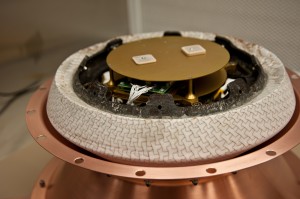Update at 03:58 CEST from Bill Ailor, the project lead for the REBR investigation. Read/watch more about this fascinating device here – Ed.
The Reentry Breakup Recorder successfully recorded data during the reentry and breakup of the European Space Agency’s Automated Transfer Vehicle ATV-3.
Recording began when ATV-3 entered the atmosphere and continued through breakup of ATV-3, release of REBR during breakup, and REBR impact with the South Pacific Ocean. At first look, the data look good. Assessment and analysis of the data will begin shortly.
This is REBR’s fourth test flight and third success. Work has been initiated on the next version of the device – ‘REBR-Wireless’. The REBR-Wireless system will add a number of small, wireless sensors attached to critical structural elements in the host vehicle. REBR will record temperature, pressure, and other data from these small sensors as the host reenters and breaks apart. This data, added to the data stream that REBR transmits after a reentry, will provide details on reentry heating of large unprotected structures that can be used to verify reentry hazard prediction models and enable objects to be designed to minimize hazards to people and property after a reentry.
We are most grateful to the Japan Aerospace Exploration Agency (JAXA) for launching REBR, to the astronauts on the International Space Station for installing and activating REBR on ATV-3, and to the European Space Agency for providing this test opportunity. All of REBR’s flight tests were integrated and flown under the direction of the US Department of Defense’s Space Test Program, and we are most grateful for their support and guidance.
REBR was developed by The Aerospace Corporation (Aerospace) with funding and support from Aerospace, the Air Force Space and Missile Systems Center, the Air Force Safety Center, The Boeing Company, NASA Goddard Space Flight Center, and NASA Ames Research Center.


 Automated Transfer Vehicle page
Automated Transfer Vehicle page ATV blog archive
ATV blog archive
Discussion: no comments